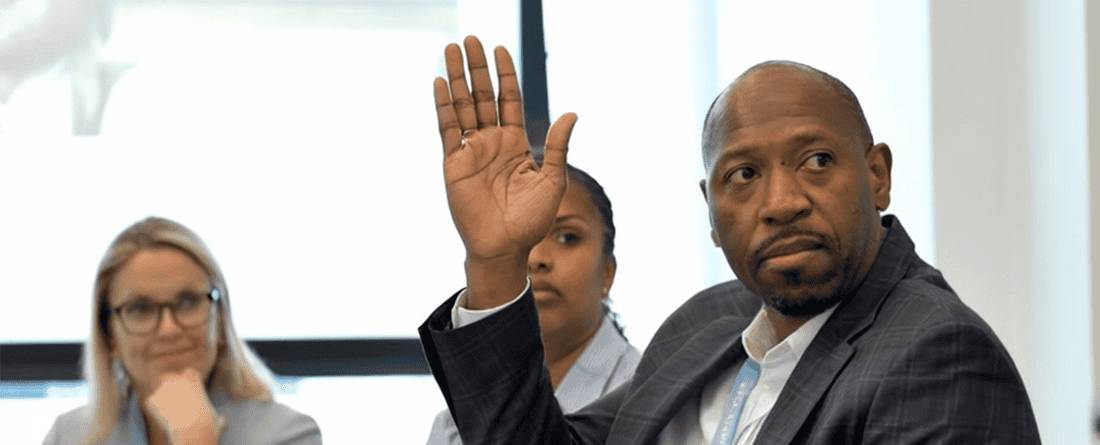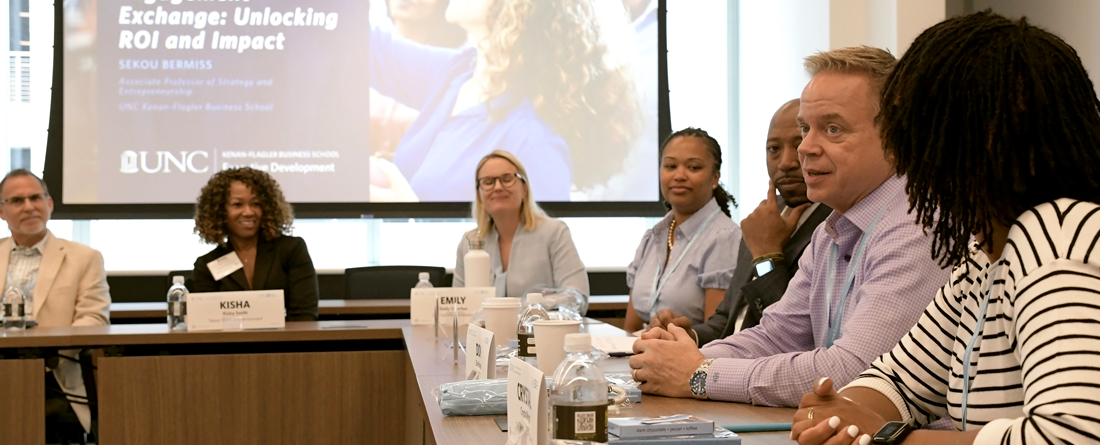
Imagine your organization as a car. Your strategy is the steering wheel, your employees are the engine, and the gas in the tank? Motivation.
As an organizational leader, merely delivering the vision and strategy are not enough. Instead, you need others to believe in and execute that vision. Mabel Miguel, distinguished professor of organizational behavior at UNC Kenan-Flagler Business School, has extensively explored the dynamics of leadership and motivation. “People who are only motivated by compensation (that is, money) do exist, but they are in the minority,” Mabel explains. “Leaders should not overlook very strong intrinsic motivations like purpose, autonomy, and opportunities for growth and learning.” Together, these three components can transform any organization’s leadership approach and drive impact.
1. Purpose: Creating a Meaningful Mission
At the heart of any successful organization is a clear and compelling purpose. Purpose provides employees with a reason to come to work each day beyond just a paycheck. It is the foundation upon which passion and commitment are built. As a leader, it is your role to articulate this purpose clearly and consistently.
To motivate your team with purpose, start by defining what your organization stands for and what it aims to achieve. This purpose should resonate with your employees on a personal level. Whether it is improving lives through innovative technology, fostering community development, or driving sustainability, your organization’s purpose should inspire and unite.
Once defined, communicate this purpose through every channel available. From company-wide meetings to everyday interactions, make sure your message is heard and understood. Use stories and examples that highlight how individual roles contribute to the larger mission. When employees see the tangible impact of their work, their sense of purpose is reinforced.
Embedding purpose into your organizational culture is also crucial. Recognize and celebrate efforts that align with your mission. Create opportunities for employees to engage in purpose-driven projects and initiatives. By doing so, you create a workplace where purpose is not just a statement, but a lived experience.

2. Autonomy: Empowering Employees to Take Ownership
Autonomy is a powerful motivator. When employees have the freedom to make decisions and take ownership of their work, they are more engaged and productive. As a leader, fostering autonomy involves trusting your team and providing the right balance of guidance and independence.
To foster autonomy, start by building a trust-based environment. Trust is the cornerstone of any successful team. Show your employees that you trust their judgment and capabilities by delegating responsibilities and avoiding micromanagement. Empower them to take initiative and make decisions within their scope of work.
While autonomy is about giving employees freedom, it also requires clear expectations. Ensure that your team understands the goals and parameters of their tasks. Provide them with the resources and support they need to succeed. Regular check-ins and feedback sessions can help keep everyone aligned and provide opportunities for course correction if needed.
Autonomy also encourages innovation and creativity. When employees feel free to experiment and explore new ideas, they are more likely to develop innovative solutions. Create an environment where taking calculated risks is encouraged and failure is seen as a learning opportunity rather than a setback. By doing so, you unleash the creative potential of your team.
3. Opportunities for Growth and Learning: Fostering Continuous Development
In a rapidly changing world, continuous learning and development are essential for both individual and organizational success. Providing growth opportunities not only enhances employees’ skills but also boosts their motivation and loyalty.
To foster growth, start by creating a learning culture within your organization. Encourage a mindset of continuous improvement and curiosity. Provide access to learning resources such as online courses, industry conferences, and dedicated learning and development programs. Encourage employees to pursue certifications and advanced degrees that align with their career goals.
Employees are more motivated when they see a clear path for career advancement. Develop and communicate clear career pathways within your organization. Work with employees to set individual development goals and create personalized growth plans. Regularly review and update these plans to reflect changing aspirations and organizational needs.
Mentorship and coaching are invaluable tools for personal and professional growth. Pair employees with mentors who can provide guidance, support, and insights based on their own experiences. Implement coaching programs that focus on developing leadership and soft skills. These relationships not only enhance professional development but also strengthen bonds within the organization.
Inspiring others to champion your organization’s vision and execute its strategy requires more than just setting goals and delegating tasks. By providing teams with a clear sense of purpose, the autonomy to take ownership of their work, and ample opportunities for growth and learning, you create an environment where motivation thrives. This holistic approach not only drives individual and organizational success, but also fosters a workplace where employees feel valued, empowered, and inspired to contribute their best. As a leader, your ability to integrate purpose, autonomy, and growth into your leadership style is the key to unlocking the full potential of your team and achieving lasting success.
Sources:
Daniel H. Pink, Drive: The Surprising Truth About What Motivates Us
Simon Sinek, Start with Why: How Great Leaders Inspire Everyone to Take Action
Adam M. Grant, Give and Take: A Revolutionary Approach to Success
Richard M. Ryan and Edward L. Deci, “Self-Determination Theory and the Facilitation of Intrinsic Motivation, Social Development, and Well-Being”
Teresa Amabile and Steven Kramer, The Progress Principle: Using Small Wins to Ignite Joy, Engagement, and Creativity at Work
David Rock, Your Brain at Work: Strategies for Overcoming Distraction, Regaining Focus, and Working Smarter All Day Long
Carol S. Dweck, Mindset: The New Psychology of Success
Edgar H. Schein, Organizational Culture and Leadership
Peter M. Senge, The Fifth Discipline: The Art & Practice of The Learning Organization
Jim Collins, Good to Great: Why Some Companies Make the Leap… and Others Don’t
Stephen R. Covey, The 7 Habits of Highly Effective People: Powerful Lessons in Personal Change
Michael F. Steger, Bryan J. Dik, and Ryan D. Duffy, “Measuring meaningful work: The Work as Meaning Inventory (WAMI)”





